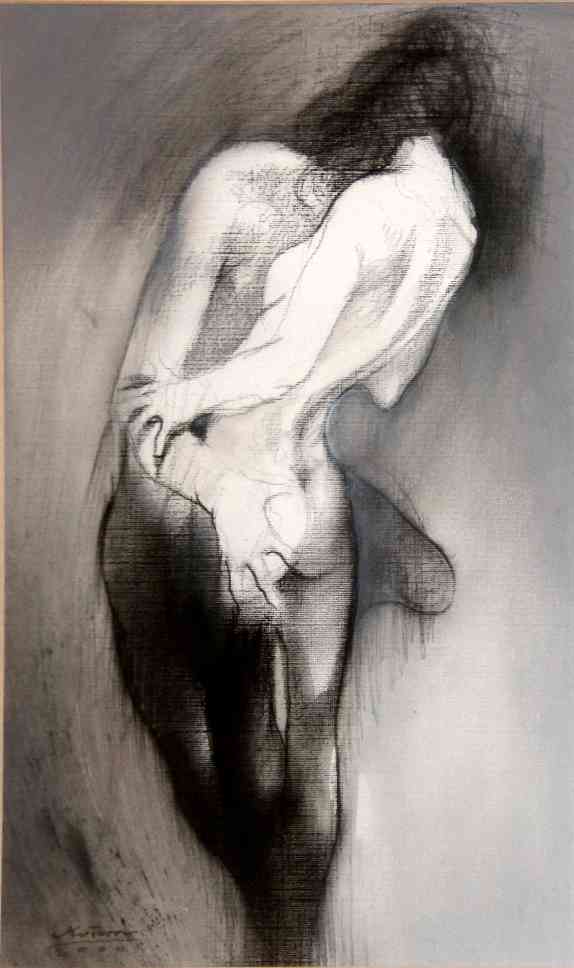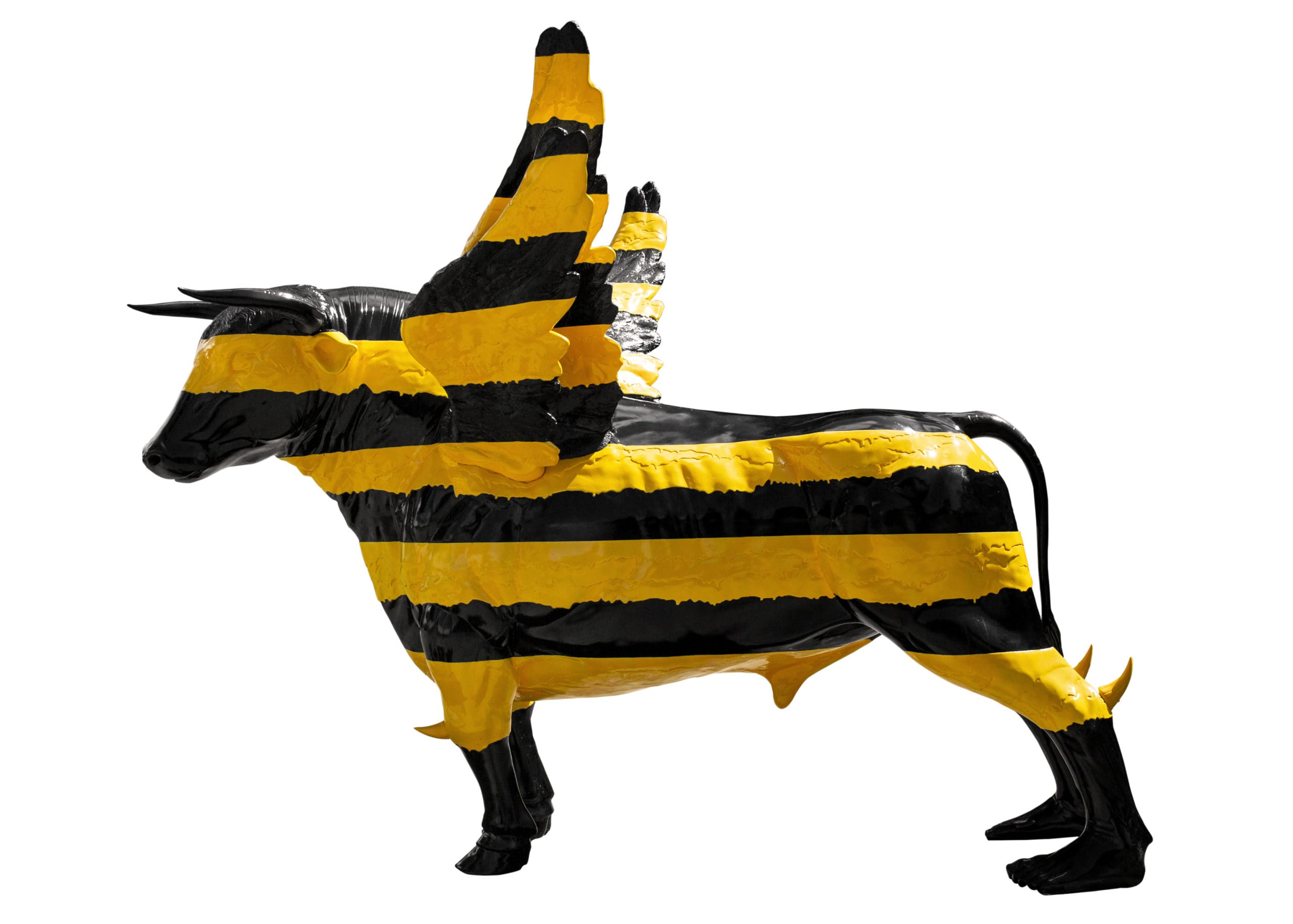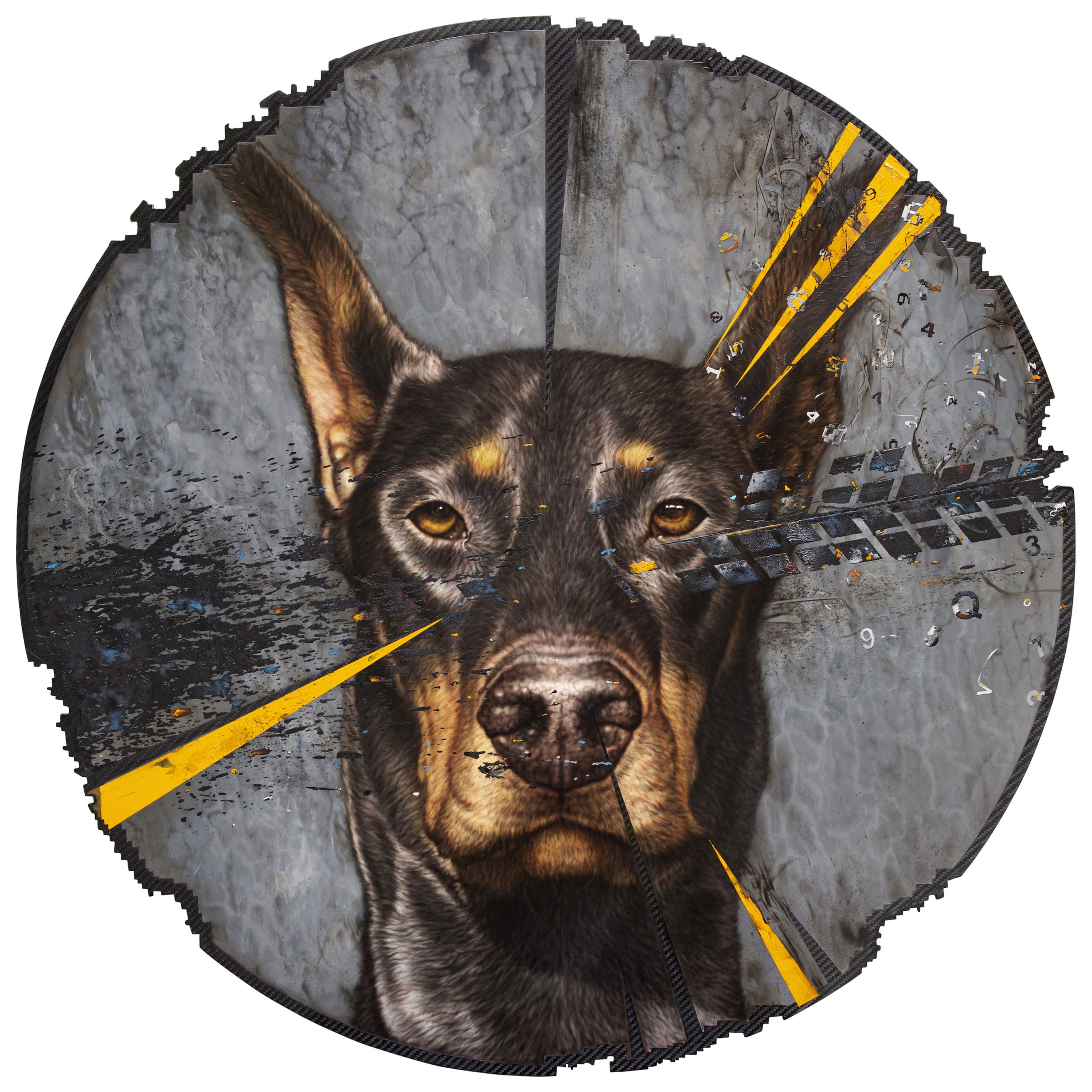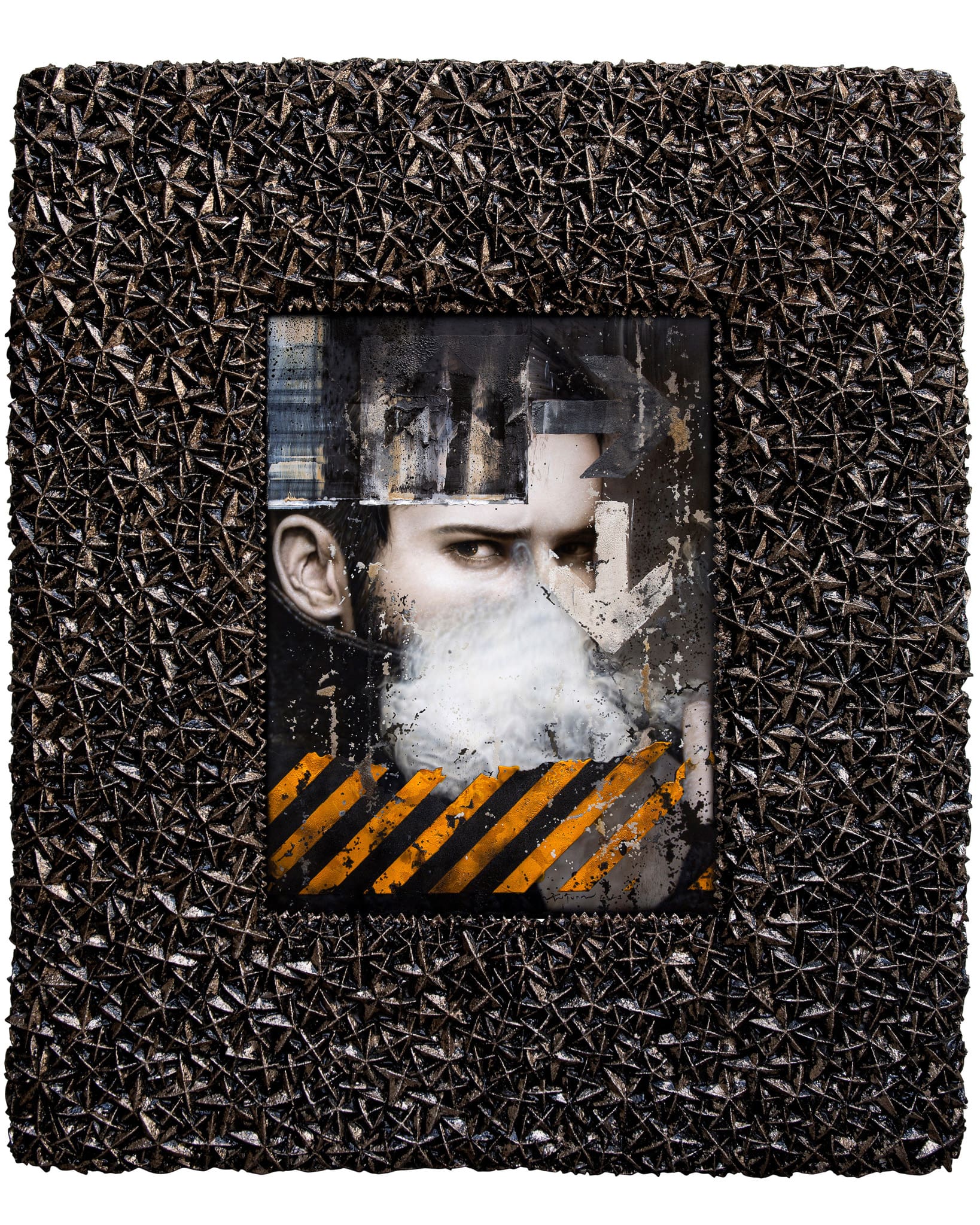Smoke, oil on canvas with fiberglass/resin by Ronald Ventura
Courtesy of Salcedo Auctions
How does a multi-awarded, auction record-shattering artist arrive at his own opening? Like a boss, starting with the fifteen Lamborghinis that escorted Ronald Ventura to the vernissage of his Salcedo Private View show titled Beastmaster. After a bull run, Ventura emerged from one of the Lambos idling on Ayala Avenue and made his way to the gallery where he was cheered and applauded by the waiting crowd.
The man who worked the crowd that afternoon appeared seriously fashionable in his slim white jeans, color-blocked top, undercut man bun underneath an AMIRI cap, and snakeskin stompers. He looked very different from the emerging artist from 22 years ago, who opened his first two solo shows within a month of each other, first at West Gallery, and then the Drawing Room. Ventura’s art is just as evolved.


Drawing Room’s founder, Jun Villalon, remembers a “really nice guy, who was quite humble.” “At that time, he was still kinda like starting out, and he liked drawings,” Villalon says. “Personally, I also like drawings. And when I saw his works, I was very impressed with his skill and his passion.”
The artist showed bond paper size paper works, filling the walls of Villalon’s gallery. “That’s very rare, to have a show devoted to works on paper,” Villalon says. The art ecosystem was very different then, when there were just a few galleries outside of the malls, Drawing Room among them, and the market was years from the start of its explosive growth. “Sinasabi sa akin ng collectors,” Villalon says, “at that time, when you go to a gallery, hindi nag-aagawan.” But Ventura’s appeal was already apparent. “We did OK,” Villalon continues, “it was quite a strong show.”
Ventura didn’t stay too long with simpler figurative drawings, though his supreme draftsmanship and mastery of the anatomical form would remain as the bedrock of his practice. In the years since, Ventura improved his technique and expanded from every direction, in terms of concept, medium, and even genre. He would pull from diverse references, the codes of which would come to define his eras.
“His art has been, over time, a layering, much like those initial layers that came out of the post-floods in Malabon,” Salcedo Auctions chairman Richie Lerma says. “He builds and builds up on his art, and I love that. Because when you think about it, Philippine culture is like that.”

Courtesy of Salcedo Auctions

Courtesy of Salcedo Auctions
The internet has provided references other than the books, magazines and other printed materials that the artist looked at before the arrival of the World Wide Web. Some of the elements that made their way to Ventura’s canvases came from his personal experiences, like the floods of his youth which gave his early paintings a sepia tone. There are the cartoon characters introduced by his son, the bull that symbolized St. Luke spotted while on a trip to Venezia, and the dog that gave the artist a gnarly welcome in Australia.
Lerma, who was director & chief curator of the Ateneo Art Gallery when Ventura received the Ateneo Art Award (which came with an artist residency in Australia) back in 2005, recalls the incident vividly. “Very innocently, Ronald brought all these art materials from the Philippines with him,” Lerma narrates. “And Australia was very strict with biosecurity. So he was stopped, and all those dogs that came out subsequently in his works, came from the sniffer dogs that pounced on him because of all the art materials that he had. And his belongings were wrapped in all this yellow tape. Those images have stuck, and it still connects to his way of looking at himself and reality. That idea of regulation with that particular beast, and negotiating that kind of relationship as well.”
Ventura’s latest works reveal a preoccupation with supercars, hence the theatrical entrance. “What people see as self promotion is simply him being himself,” Lerma opines. “It’s not put on at all. These are his interests that have obviously built up over time. But we can’t blame him for that because his milieu has also changed. The love for design, the love for cars, the love for shoes. Of course that’s the world that you enter when you start to sell 1 to 2 million dollar paintings.”
His skill for showmanship—not to mention record-setting prices – may seem at times to overshadow Ventura’s critical accomplishments and the role he plays in the contemporary art scene: “When I say that Ronald is important, I really mean it,” Lerma says. “Because when I look at the history of contemporary Filipino art, you know, his imagery and his practice, there’s nobody like him. And everybody [working in the figurative vein] after that Ateneo Art Award kinda looks like him, stylistically. And on that score alone, I think people can take a look at Philippine contemporary art and give him that assessment.”
